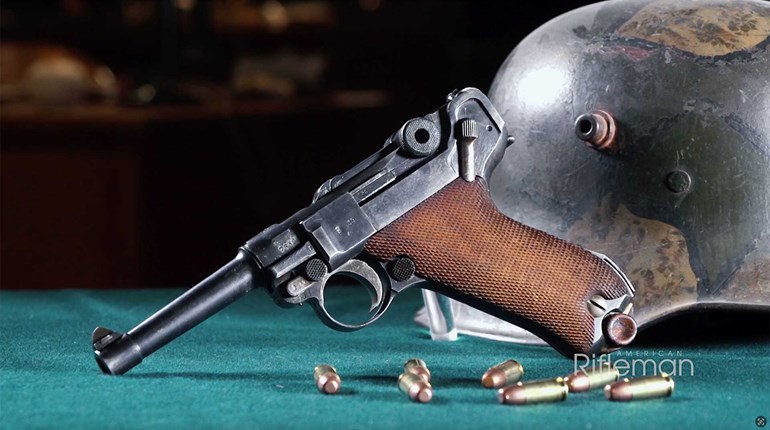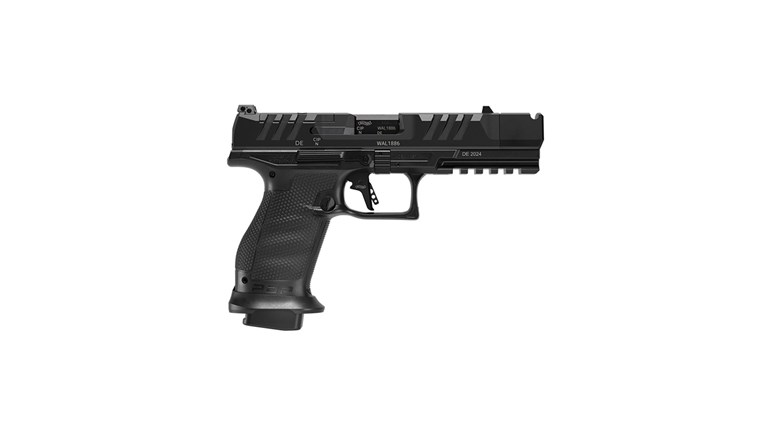
- Stronger, cheaper and half the weight of brass.
- Greater corrosion resistance.
- More internal volume.
- More consistent ignition.
- +P velocities without +P pressures.
- Cases won’t stretch, no trimming required.
- Withstands 40 or more reloadings.
- Picks up with a magnet.
- Can be anodized different colors for instant ID.

Convenience and coolness aside, SST NAS3 may be the most significant advance in cartridge case technology since brass replaced the paper cartridge around 1870. Yes, steel, aluminum and polymer are options for cartridge cases, but all are “throwaway” technologies. Aluminum is too soft to safely reload; the Berdan primers are there to discourage reloading. Polymer cases get the same Berdan treatment for the same safety reason. Steel cases are also universally Berdan primed and comparatively difficult to work through dies, even if you are set up for reloading with Berdan primers.
Which of SST’s claims for their new 9mm cases can we check for ourselves? And which are really important to the handloader? Let’s take ‘em by the numbers.
Stronger
Manufacturer tested at more than 65,000 psi—that’s almost 7.62 NATO proof load pressure—the NAS3 cases are incredibly strong. SAAMI standard for 9mm is 35,000 psi; 9mm +P is 38,500 psi. While we’re talking about this, let’s point out that though the NAS3 case is plenty strong, handguns are not built to take rifle cartridge pressures. The NAS3 case strength is no license for handloading foolishness.

Upon firing any cartridge, the chamber walls and the breech face support the case; gas forces expand in all directions but of course are directed by design to drive the bullet forward. There is no force of consequence that pulls the cartridge case forward on firing, so the NAS3 case/head crimp has no firing stresses applied that would tend to pull that joint apart.
However, standard dies utilize the shellholder to pull the case out of the resizing and expanding dies; the NAS3 case requires use of special SST sizing and flaring dies that don’t stress the crimp with that pulling action. The dies accomplish this by pushing the case from the dies with a compressible synthetic rod that acts like a spring.
During testing I found that pulling bullets will also overstress that head-to-case-body crimp because inertia and press-mounted bullet pullers apply force in that forward direction, essentially pulling the head and case body in opposite directions. Pulling bullets leaves a visible gap between the case body and head, indicating the crimp is loosened and necessitating discarding cases to avoid possible case head separation upon firing or extraction.
I brought this matter up with SST spokesman Andrew Vallance. “In the near future Shell Shock will be releasing a simple attachment accessory to eliminate this issue and enable the use of NAS3 cases with inertia pullers,” he said.
Life is full of trade-offs, so while we’re on the die subject I’ll mention another caveat to accompany the special dies: even though the SST resizing die has a carbide insert, the NAS3 stainless steel 9mm cases still require lubrication (though brass cases do not).
Cheaper
MSRP for SST NAS3 cases is $60 for the first 500, 12¢ each, with price reductions for larger quantities. An online check shows new 9mm brass cases run from 14¢ to 17¢. Price advantage: NAS3.
Lighter
Yep. An average of 10 NAS3 cases weighed in at 29.7-grains each, compared to a mixed batch of 10 brass cases at 58.8-grains—almost exactly half the weight of brass.
Resist corrosion

More volume
SST claims two percent more case volume over brass due to the squared bottoms at the case head versus brass having rounded inside corners. The common method of measuring volume is to weigh an empty case, then fill it with water and weigh it again. Scales only promise a +/- .1-grain accuracy, so checking 9mm case volume would be inconclusive unless you measured about 100 NAS3 cases and then 100 brass cases from each of several manufacturers (after trimming all to the same length)—say, 400 cases total—and compared the results. Feel free, I’ve got a life to attend to. I’ll concede this one to the manufacturer.
Consistent ignition

We can infer consistent ignition from chronograph extreme spread/standard deviation (though other factors are also at work), but independent testing by munitions specialist H.P. White Laboratory has already done this work for us, finding fantastically low standard deviations of 0.093 fps and extreme spreads of only 3 fps with 124-grain FMJ bullets and 4.2-grain of Titegroup.
+P velocity without +P pressure
Without access to a pressure measuring facility, we can’t verify this with absolute confidence. However, we might make an inference that would also infer some veracity for the two percent volume claim above. We can load NAS3 and brass cases identically and fire them; Boyles Law says that the NAS3’s greater volume will result in lower pressure compared to brass cases, which should result in lower velocity, and velocity we can measure with a chronograph.
No trimming, 40 reloads

Pros
- No case stretching—hence no trimming is necessary.
- Flash hole beveling—an aid to uniform powder ignition and hence accuracy—is factory applied.
- Flash hole is enlarged for “lead-free” primers. While not widely available to handloaders yet (only Fiocchi Zero Pollution small pistol primers come to mind), we can expect more in the future.
- Lower initial cost than brass, plus reloading each case five or 10 times more than brass cases is a significant saving.
- Color coding bases for instant load ID.
- Handloaders can get +P velocities without +P pressures. L-Tech Enterprises loads its 124-grain Full-Stop bullet in the SST case at nearly 1,200 fps and reports pressure below 38,500 psi.
- Half the weight lightens our range bags, and we can sweep up fired cases with a magnet. Plus there’s the simple “cool factor” of unique-looking ammo, especially with color anodized case heads.
- Resizing cases requires lubrication. Adding this step back into the handloading process negates one of the joys of clean, rapid reloading on the progressive press with carbide dies.
- Pulling bullets necessitates throwing away the weakened cases.
- Proprietary dies are required. Though any bullet seating die will work, the unique sizing and flaring dies are available only from SST, MSRP $99.99 for the pair.
- New technology. As with anything new, there will be some wrinkles to iron out, sure to be discovered by a base of handloaders and shooters actually employing the technology over time.
So, let’s load up and find whatever wrinkles might need ironing …
The 9mm Luger is SST’s debut case—and more calibers, including bottleneck rifle cases, are in the works. You can learn more about SST at www.shellshocktech.com.
Photos by Art Merrill.



































